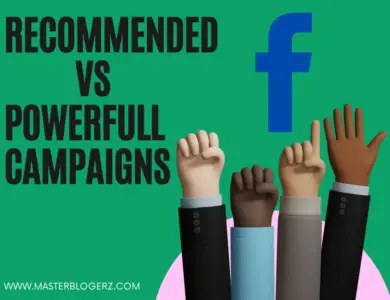
Table of Contents
Facebook ad Placement
When it comes to running successful Facebook ads, one of the key decisions you’ll face is how to place those ads. Yep, placement isn’t just about where you put your couch in the living room (although, let’s be honest, that’s important too). We’re talking about Facebook ad placement — the magical moment where your ad gets shown to the world.
In this guide, we’re going to break down manual and automatic Facebook ad placement in a way that’s so simple even your grandma could understand it. (Well, if your grandma is into digital marketing, of course.)
What Exactly is Facebook Ad Placement?
Before we dive into the manual vs. automatic debate, let’s get on the same page about what Facebook ad placement really means. Simply put, it’s where your ad appears on Facebook’s various platforms. We’re not just talking about your typical News Feed scroll; Facebook owns Instagram, Messenger, and a bunch of other sneaky places your ad could pop up. The goal here is to choose placements that get your ad in front of the right people at the right time. Easy, right?
Now that we’ve established that, let’s move on to the good stuff: automatic placements and manual placements.
Automatic Facebook Ad Placement – Let Facebook Do the Heavy Lifting
This is for those of you who like things easy. Automatic placement means you’re letting Facebook decide where your ads should appear. Wait, what? Facebook decides? Yep, the smart algorithms do all the thinking for you. Facebook will analyze your audience, budget, and the type of ad you’re running, then spread it across various platforms like Facebook, Instagram, Messenger, and Audience Network. Think of it as the lazy person’s dream: set it, forget it, and hope for the best!
So, why would you go for automatic placement? Here are some reasons:
- It saves time: Facebook is like a digital ad ninja, optimizing everything for you while you binge-watch your favorite series.
- Better reach: Since the ad is going to multiple platforms, your chances of getting in front of the right people increase.
- Cost-efficient: Facebook’s system is designed to get you the best bang for your buck by putting your ad where it’s most likely to perform.
But… is this always the best way?
Well, automatic placements are kind of like letting someone else pick your outfit for the day. They might do a great job, but they might also make you look like a clown at a black-tie event. You know what I mean?
Manual Facebook Ad Placement – Take Control Like a Boss
If you’re someone who likes being in the driver’s seat (even if you’re bad at parallel parking), manual placement is for you. Here, you decide where your ad goes. Want your ad to only show up on Instagram Stories? Done. Only in the Facebook Marketplace? You got it. Manual placement gives you control, but remember, with great power comes great responsibility. Cue dramatic music.
Here’s why manual placement might be your jam:
- Specific targeting: Want your ad to only be shown on mobile devices? Done. Desktop users won’t even know it exists.
- Better focus on high-performing placements: Maybe you know that your audience hangs out on Instagram more than Facebook. Manual placement allows you to choose where to spend your ad dollars wisely.
- Testing different strategies: Manual placement lets you experiment with different placements, so you can compare and see which one is more effective.
However, this method does take more time and effort. It’s a bit like making a custom sandwich versus picking up a ready-made one. Sure, the custom one is exactly what you want, but it’s also more work, and you might still end up with mustard on your shirt. Life is full of risks.
Which One Should You Choose?
Ah, the million-dollar question: manual vs. automatic placement — which one is better? The answer is a classic “it depends.” (Of course, it depends.) If you’re just starting out or have no idea where your audience is most active, automatic placement is your safest bet. Facebook’s algorithms are pretty good at figuring it out for you. It’s like letting a GPS guide you home when you’ve got no clue where you are.
But if you’re more experienced or know exactly where your audience is (maybe they live in the Instagram Stories neighborhood), then manual placement will give you that added control to fine-tune your campaign. It’s like driving with no GPS but already knowing a shortcut that saves you time.
Pro tip: You could even try a mix! Start with automatic placement to get a feel for where your ads perform best, then switch to manual placement once you’ve gathered some data. It’s like doing a little detective work before taking matters into your own hands.
Wrapping It Up
So there you have it: a crash course in manual and automatic Facebook ad placement. Whether you want to let Facebook do the work or you’re a control freak who wants to handle everything yourself, both methods have their merits.
Just remember, choosing your Facebook ad placement isn’t a life-or-death decision, but making the right choice can definitely give your ads that extra boost. Either way, get ready to see those ad results roll in — and who knows, you might just become the Mozart of ad placements in the process. Cue applause.
Now, go forth and place those ads like the marketing wizard you are! ✨

Aitizaz Rahim is a dynamic Digital Marketing and SEO expert, empowering businesses worldwide with proven strategies. As the founder of Masterblogerz, he shares actionable insights to help others master the digital marketing world.



